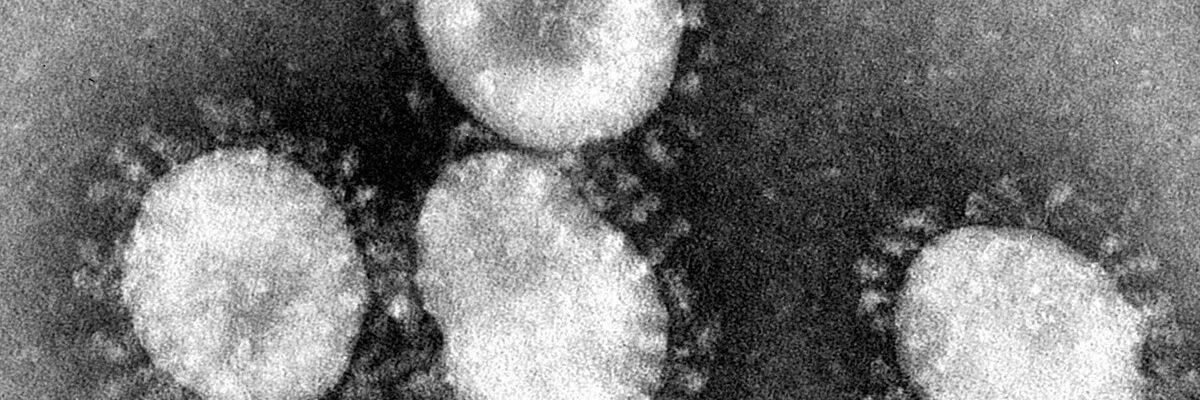Summary
Severe Acute Respiratory Syndrome (SARS) is a contagious respiratory illness caused by the SARS coronavirus (SARS-CoV). First reported in China in 2002, SARS quickly spread to over 24 countries. The virus was contained by 2004 through rapid response and containment efforts, and no new cases have been reported since then.
SARS symptoms are similar to those of other respiratory infections and include coughing, fever, headache, muscle aches, and congestion. In severe cases, it progressed to pneumonia, which made it particularly dangerous and often fatal for those affected.
Due to the rapid containment of SARS, research on the virus remains limited. Treatments during the outbreak primarily focused on relieving symptoms, as no specific antiviral treatment was available.
Table of Contents
- Symptoms of Severe Acute Respiratory Syndrome (SARS)
- Diagnostic Procedures for Severe Acute Respiratory Syndrome (SARS)
- Complications of Untreated Severe Acute Respiratory Syndrome (SARS)
- Causes of Severe Acute Respiratory Syndrome (SARS)
- Prevention of Severe Acute Respiratory Syndrome (SARS)
- Risk Factors for Severe Acute Respiratory Syndrome (SARS)
- Severe Acute Respiratory Syndrome (SARS) FAQs
Symptoms of Severe Acute Respiratory Syndrome (SARS)

The symptoms of SARS are similar to those of other viral infections. Initial symptoms typically appear two to seven days after exposure to the virus. These early symptoms include:
- High fever. A sudden and persistent fever is one of the first signs.
- Headache. Patients often experience intense headaches.
- Extreme fatigue. SARS commonly causes significant tiredness.
- Muscle pain. Body and muscle aches are frequent symptoms.
- General discomfort. Many patients feel generally unwell.
- Loss of appetite. Appetite often decreases as the infection takes hold.
- Diarrhea. Some individuals experience gastrointestinal symptoms like diarrhea.
After about three days, additional respiratory symptoms may develop:
- Dry cough. A persistent, dry cough often appears as the infection progresses.
- Shortness of breath. Many patients experience difficulty breathing.
- Sore throat. Pain in the throat may develop.
- Congestion. Some experience nasal congestion or runny nose.
Around 10 days into the illness, patients may develop pneumonia, which is a sign of disease progression. Pneumonia can be confirmed through chest X-ray and indicates that SARS has worsened in the patient’s body, often requiring intensive care.
Diagnostic Procedures for Severe Acute Respiratory Syndrome (SARS)
Diagnosing SARS promptly is essential to provide appropriate care and prevent further transmission. Here are the primary diagnostic methods used to identify SARS:
- Polymerase Chain Reaction (PCR) Testing. PCR testing is the standard method for diagnosing SARS, as it detects the genetic material of the SARS coronavirus (SARS-CoV) in respiratory secretions, blood, or stool samples. PCR testing can confirm the presence of the virus within a few hours, making it useful for early detection and containment.
- Serology Testing. Serological tests detect antibodies in the blood that develop in response to SARS-CoV infection. This test is often used later in the infection to confirm past exposure or diagnosis in cases where PCR testing is inconclusive.
- Chest Imaging (X-ray or CT scan). Chest X-rays or CT scans help assess the extent of lung damage. In SARS cases, chest imaging often shows signs of pneumonia or lung inflammation. While not definitive for SARS, imaging can indicate respiratory issues typical of severe cases.
- Blood Tests. General blood tests are used to monitor a patient’s health and detect abnormalities associated with SARS, such as low white blood cell counts or abnormal liver function. While not specific to SARS, these tests provide information on the body’s response to infection.
- Viral Culture. In specialized laboratories, the virus can be isolated and grown in culture to study its characteristics. This method is more time-consuming and used primarily for research purposes rather than routine diagnosis.
Early detection through PCR and other tests allows for prompt isolation and treatment, minimizing the risk of SARS transmission and improving outcomes for infected individuals.
Complications of Untreated Severe Acute Respiratory Syndrome (SARS)
If left untreated, Severe Acute Respiratory Syndrome (SARS) can lead to several serious and potentially fatal complications. These complications primarily arise from the virus’s effect on the respiratory and immune systems, often escalating quickly in severe cases.
- Acute respiratory distress syndrome (ARDS). SARS frequently causes severe lung inflammation, which can lead to ARDS. This condition results in fluid buildup in the lungs, impairing oxygen exchange and making it difficult to breathe. ARDS requires intensive care and mechanical ventilation and can be life-threatening if not managed promptly.
- Pneumonia. SARS often progresses to pneumonia, where the lungs fill with fluid or pus, leading to difficulty breathing, chest pain, and dangerously low oxygen levels. Pneumonia can spread to both lungs and often requires hospitalization for oxygen support and monitoring.
- Organ failure. Untreated SARS can lead to multi-organ failure, including the liver, heart, and kidneys. The virus’s effects on the immune system and inflammatory response put stress on multiple organs, leading to severe damage and, in some cases, complete failure.
- Liver damage. The SARS virus can cause liver inflammation, particularly in patients with pre-existing liver conditions. Liver function may decline rapidly, affecting the body’s ability to filter toxins and produce essential proteins.
- Heart complications. SARS can cause myocarditis (inflammation of the heart muscle), which weakens the heart’s ability to pump blood effectively. In severe cases, this can lead to heart failure, especially in older adults or those with pre-existing heart conditions.
- Secondary infections. Patients with SARS are often at risk of secondary bacterial infections, such as bacterial pneumonia or sepsis, due to the immune system being compromised. These infections can worsen the condition and increase mortality risk.
- Death. Without treatment, SARS can escalate rapidly, leading to respiratory failure and multi-organ failure, which are often fatal. Elderly individuals and those with chronic health conditions are at particularly high risk of death.
Because SARS can progress quickly, early diagnosis and supportive care are crucial in preventing these life-threatening complications.
Causes of Severe Acute Respiratory Syndrome (SARS)
Severe Acute Respiratory Syndrome (SARS) is caused by a specific type of coronavirus, SARS-CoV, and spreads primarily through direct transmission from an infected person. One of the main ways SARS spreads is by inhaling droplets containing the virus when an infected person coughs or sneezes. The virus can also enter through the mouth, nose, or eyes of someone within about three feet of the infected person.
Another transmission route is through contact with surfaces contaminated by bodily fluids from an infected person, such as in hospital settings. During the outbreak, numerous healthcare workers were infected due to exposure to contaminated equipment and surfaces.
Once the SARS virus enters the human body, it multiplies primarily in the lungs and sometimes in the tissues of the gastrointestinal tract. However, studies indicate that the most significant damage occurs in the air sacs (alveoli) of the lungs. This damage leads to severe respiratory symptoms, often progressing to acute respiratory distress syndrome (ARDS), which causes severe difficulty in breathing and often requires intensive medical care.
Prevention of Severe Acute Respiratory Syndrome (SARS)

Currently, there is no vaccine available for the SARS virus. However, as with other infections, certain basic hygiene practices can help prevent SARS transmission. These preventive measures include:
- Frequent handwashing. Wash hands thoroughly, especially after touching potentially contaminated surfaces.
- Avoid touching the face with unwashed hands. This helps prevent the virus from entering through the eyes, nose, or mouth.
- Cover the mouth and nose when coughing or sneezing. Use a tissue or elbow to reduce the spread of respiratory droplets.
- Encourage others to practice these precautions as well. Remind family, friends, and colleagues to follow these preventive measures.
SARS is only contagious once symptoms have appeared. Therefore, anyone diagnosed with SARS should avoid contact with others for at least 10 days after symptoms improve. It is important to note that SARS is most contagious in the second week of infection, when symptoms are most severe. Practicing isolation and hygiene during this period helps prevent further spread of the virus.
Risk Factors for Severe Acute Respiratory Syndrome (SARS)
The SARS virus is highly contagious and can cause severe damage to the body. The following factors increase the risk of contracting SARS:
- Frequent travel to areas with reported SARS outbreaks. Visiting regions where SARS cases have been identified significantly raises the risk of exposure to the virus.
- Being a healthcare worker. Doctors, nurses, and other healthcare staff involved in managing SARS cases or controlling its spread are at high risk due to their close contact with infected patients.
- Male gender. Some studies have suggested that men may be more susceptible to severe cases of SARS, although the exact reason is not fully understood.
- Pre-existing medical conditions. Conditions like diabetes and chronic hepatitis B increase the vulnerability to SARS and can contribute to more severe complications.
Complications of SARS
Most fatalities from SARS result from severe complications, such as:
- Respiratory failure. SARS can lead to acute respiratory distress syndrome (ARDS), a condition where the lungs are unable to provide sufficient oxygen to the blood.
- Liver impairment. SARS may cause liver damage, particularly in patients with pre-existing liver conditions.
- Heart failure. In some cases, SARS can weaken the heart, leading to heart failure, especially in older individuals.
These complications are most commonly observed in patients aged 60 and older who contract SARS, as age and underlying health conditions can worsen the effects of the virus.
Severe Acute Respiratory Syndrome (SARS) FAQs
Here are answers to some common questions about SARS, including its causes, symptoms, transmission, and prevention.
- What is SARS?
Severe Acute Respiratory Syndrome, or SARS, is a respiratory illness caused by the SARS coronavirus (SARS-CoV). The disease primarily affects the lungs and is highly contagious, causing severe respiratory distress, fever, and other symptoms. - How is SARS transmitted?
SARS spreads mainly through respiratory droplets when an infected person coughs or sneezes. Close contact, such as sharing living spaces or interacting with infected individuals in healthcare settings, increases the risk. SARS can also spread by touching surfaces contaminated with the virus. - What are the symptoms of SARS?
Initial symptoms include high fever, headache, extreme fatigue, muscle pain, and a general feeling of discomfort. Respiratory symptoms, such as a dry cough, shortness of breath, and sore throat, may develop within a few days. Severe cases often lead to pneumonia and difficulty breathing. - How long is the incubation period for SARS?
The incubation period for SARS generally ranges from two to seven days but can extend up to 10 days in some cases. This is the time from exposure to the onset of symptoms. - Who is most at risk for SARS?
Healthcare workers, people in close contact with infected individuals, and those with weakened immune systems or chronic health conditions are at higher risk of contracting SARS. - Is there a vaccine for SARS?
Currently, there is no vaccine specifically for SARS. Efforts to develop a vaccine were underway, but the SARS outbreak was contained before one was widely distributed. Preventive measures, such as good hygiene and avoiding contact with infected individuals, remain key. - Can SARS be treated?
There is no specific antiviral treatment for SARS. Treatment focuses on supportive care to relieve symptoms, such as oxygen therapy, fluids, and ventilator support for severe cases. Early medical intervention is essential to manage symptoms and prevent complications. - How can SARS be prevented?
Preventive measures include frequent handwashing, avoiding touching the face with unwashed hands, covering the mouth and nose when coughing or sneezing, and avoiding contact with infected individuals. Healthcare workers should use personal protective equipment to reduce the risk of transmission. - Is SARS contagious even before symptoms appear?
SARS is typically only contagious once symptoms appear. This means that infected individuals are most likely to spread the virus after they begin to feel ill, making it easier to identify and isolate cases to control the spread. - What should I do if I suspect I have SARS?
If you experience symptoms consistent with SARS, such as fever, cough, or difficulty breathing, and have been in contact with a confirmed case or visited an area with known SARS cases, seek medical attention immediately. Early diagnosis and isolation are essential to prevent further spread.


